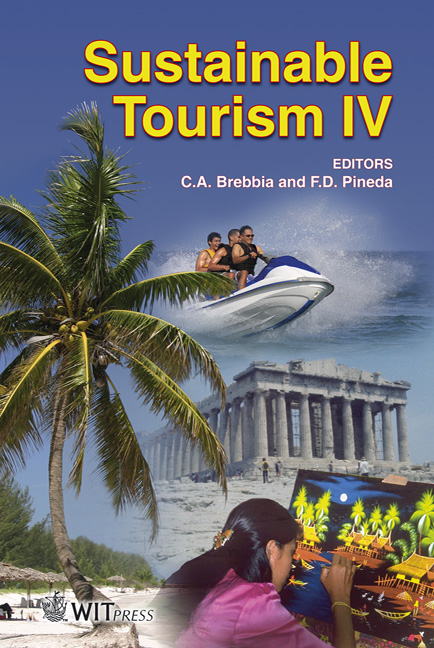Tourism As A Tool Of Development: The Case Study Of Siwa Oasis – Egypt Western Desert
Price
Free (open access)
Transaction
Volume
139
Pages
13
Page Range
537 - 549
Published
2010
Size
3,567 kb
Paper DOI
10.2495/ST100461
Copyright
WIT Press
Author(s)
D. F. Amara
Abstract
Challenges confronting the world’s visitor attractions vary both in scale and nature according to their location and ecosystem. Tourism is generally regarded as less destructive to the environment than most other industries; nevertheless, its sheer size and widespread presence create negative physical and social environmental damage. A case study of Siwa oasis, Egypt Western Desert, is selected, seeking to build a tourism industry depending on its resources. This paper helps to evaluate the present state of tourism in Siwa oasis, to consider the prospects of tourism as a tool of development in the oasis and to establish guidelines for a sustainable development approach. A field survey was conducted based on qualitative approach, in order to investigate experts’ opinions about the development of Siwa oasis as a tourist destination. Conclusions were focusing on the need to reassess tourism development process in the oasis , perceiving Siwa as a natural asset that needs to be preserved and confirming that as a result of overuse of resources it is important to discourage overdevelopment especially non ecological development projects, suggesting the application of strong sustainability criteria. Keywords: fragile ecosystem, natural and cultural resources, tourism development, sustainability, natural reserves, visitor management, Siwa oasis. 1 Introduction Egypt’s Western Desert embraces an area of 681,000 square kilometers, about two-thirds of the whole area of Egypt. It is one of the most arid regions in the world. The best known amongst these oases are Siwa, Bahriyah, Farafra, Kharga
Keywords
fragile ecosystem, natural and cultural resources, tourism development, sustainability, natural reserves, visitor management, Siwa oasis





